How to Scale Marketplace: Focus Points and Metrics
Starting an online marketplace is a big deal. Lots of points to consider and reconsider many times during the launch. But the real challenge comes next, after the launch and first sales.
To grow, recover the costs, and increase profits, you have to scale your marketplace. You stop—you die, simple as that.
You need to scale not only to get more money from your marketplace. New marketplaces pop up here and there every day. Most of them don’t survive but those that do, can strongly compete with your business. That’s why you need to open more categories, penetrate new markets, and even go global if started locally. That’s all about scaling your marketplace.
In this article, we go through the main question a marketplace owner needs to answer to scale in the right direction, points you need to focus on when scaling, and metrics you need to track.
Main question: Go to new markets or expand inside one market?
This is the dilemma an entrepreneur faces when they get a strong core in one market. Is it better to open new markets or add more categories to focus on depth in the current market?
Staying in your current market and going deeper is the easiest and fastest way to scale. You know your market, your audience, and competitors. You succeeded with your current business model. Only thing you need to do for growing is to expand your product range by adding more categories. But this approach has a big disadvantage: you will reach your growth limit fast. And eventually, you will have to expand to new markets anyway.
Expanding to new markets is more difficult but more resultant. You can take your current business model, tweak it a bit and apply it in a new market. Here, it’s way harder to reach your growth limit—there are dozens of markets and niches you can expand to. The disadvantage of this way is that there is much more risk. You can spread yourself too thin in many markets and niches, spend a fortune, and get nothing.
Founder of the popular Canada’s classifieds website Kijiji.ca Janet Bannister recommends mixing these two scaling methods. Bannister says that the most efficient and low-risk way to scale a marketplace is to enter several key markets and secure a toehold there. Once you feel comfortable in these markets, you can then open more categories.
By entering several key markets, you can use proven tactics and adjust them on-the-go so that they fit the local market dynamics. It would be much easier for you to expand product categories then.
That’s how Uber was scaling their service. First, Uber started in San Francisco and after 10 months—in New York. They used the same business tactics and they succeeded in the new location. Then Uber kept up with the same tactics to launch the service in Chicago, and finally they went internationally with Paris with the same model and tactics.
Once Uber gained critical mass in key cities in North America, they started to focus on depth. In 2014, Uber launched UberEats—a food ordering and delivery service, which was a whole new service category for them.
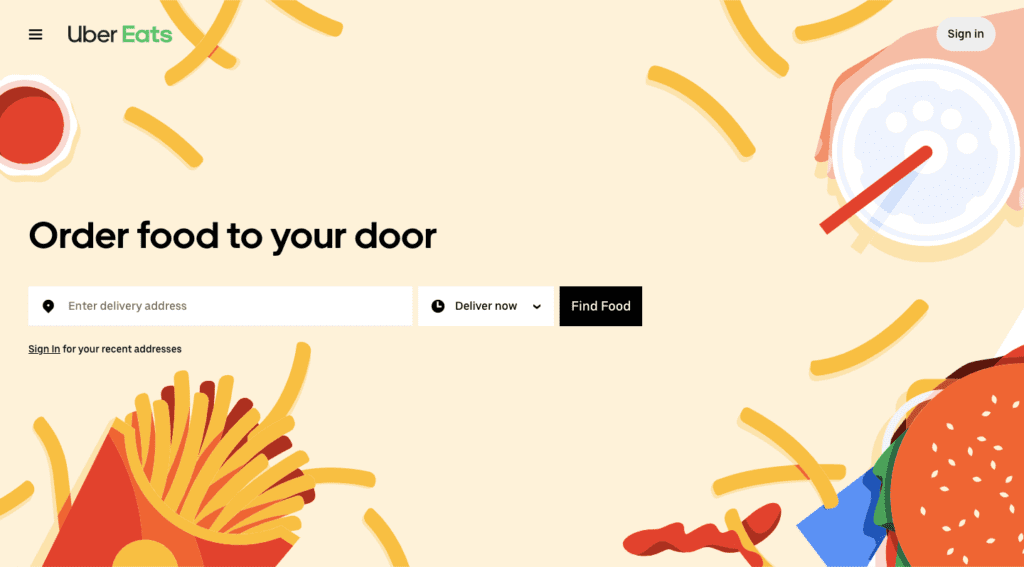
Focus on breadth to enter several key markets, then focus on depth to expand product categories.
Key points you should focus on when scaling your marketplace
Scaling is all about optimizing your resources for long-term and constant growth. You need to allocate and optimize the necessary resources in order to achieve a long-lasting success with your marketplace. Let’s see what resources you should focus on in the first place to effectively scale.
1. Balance supply and demand
Customers are the key users of your marketplace. The marketplace is all about customers: no customers—the marketplace dies. Industry giants have proven that customers won’t come if there are no sellers on the platform. So, to get more customers, you should focus on your supply first.
Grow supply by attracting more sellers to your marketplace. There are tons of ways to attract sellers, build strong supply, and balance sellers and customers on the marketplace.
Pro tip: Yelp, Indeed, Goodreads collected data to their platforms from the web to strengthen their supply side at the start. No manual work involved—the data collection was automated.
2. Grow customer base
Attracting customers is a fairly easy task: make a newsletter, launch some marketing campaigns and you have new customers. The difficult part is to retain buyers and form a base of loyal customers. By attracting new customers and making them loyal buyers, you grow your customer base.
You can start with a small group of customers and then expand. In 1995, Craig Newmark launched Craigslist. It’s now one of the world’s most known C2C marketplace—a classifieds website covering 70 countries. Back then, Craigslist was just an email distribution service among Craig’s friends.
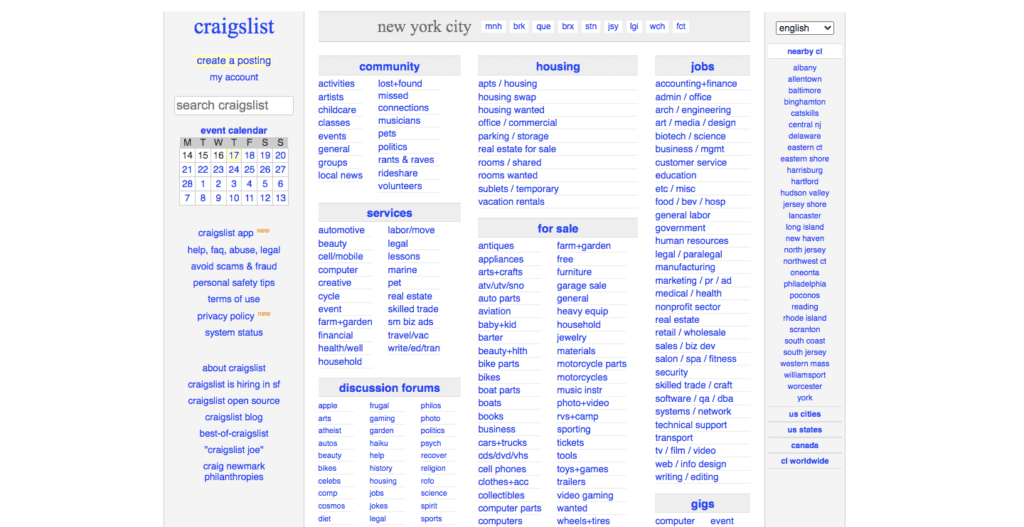
One of the most effective ways to grow your customer base is to build trust on your marketplace. We have covered this topic in detail on our blog, don’t hesitate to read this guide.
You can effectively build trust through reviews and ratings. For example, Uber has rating systems for both drivers and riders. Once a driver’s rating falls down, Uber gets rid of them. . Similarly, drivers can check the rider’s rating to get to know about them before accepting an order.
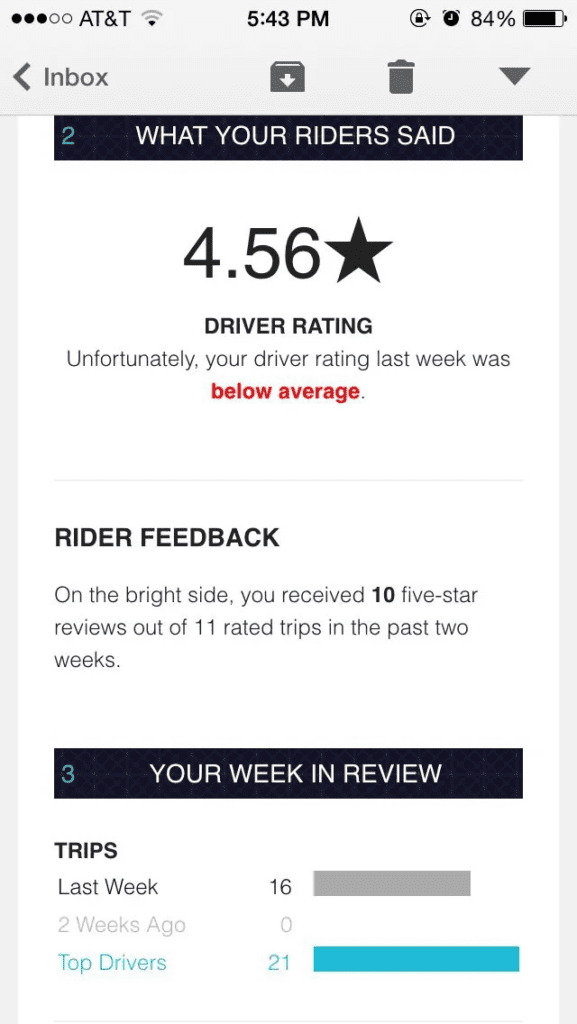
Pro tip: Use one customer group to influence other customers. These “power” customers can convince others to join your marketplace. For example, the marketing lead of Tinder personally went to several campuses and convinced the girls to join their platform. When members of male fraternities saw a lot of familiar faces on the app, they joined, too.
3. Enter new niches
Now you know that the best way to scale is to secure a toehold in key markets and then open new categories. So, once you build a strong core in all the key markets you wanted, you can now enter new niches by opening new product categories.
It’s always better to start small and grow. That’s how big players came to their success. For example, Flipkart was initially focusing on selling books when they started in 2007. They grew a customer base, established its name, and opened new categories. Now, it’s one of the largest marketplaces in India. Remember Amazon—the same scenario.
Pro tip: To enter a new niche, you can open new categories. But that’s boring. There’s a next-level thing you can do: open a separate storefront of your marketplace devoted to only this niche. For example, if you run a book marketplace, you can open a storefront on a different URL and sell something absolutely different—lighting for comfortable reading, for example. That would look as a separate niche marketplace. To implement a separate storefront, you need your marketplace software to support this functionality.
4. Go global
Go global—sounds easy. But that’s far from the truth. If you started locally, it will involve much work to expand your marketplace to other countries. But in the end, the marketplace “globalization” can result in huge income opportunities.
Two things you have to consider when going global are:
1. International shipping. Your sellers get access to a huge audience not limited by the region a seller is based. But international shipping means longer delivery periods, higher costs, and dealing with third-party international carriers.
2. Regional laws. You have to be very careful with the orders your sellers ship to other countries. There are regulations, restrictions, and prohibited items that vary from country to country. And you have to constantly keep track of any changes in regulations.
For instance, UDM.MARKET is an export marketplace based in Udmurtia. They started small as a marketplace for local small manufacturers and artisans to help them in the period of the pandemiс. And then they became a global marketplace for exporters and importers, which allowed local Udmurtia businesses to export their products abroad. Now they work in 138 countries.
Pro tip: When going global, focus on international shipping, regional regulations, and also national context.
5. Open multiple storefronts
Some marketplace software such as CS-Cart Multi-Vendor allows you to open multiple independent storefront and manage them in a single admin panel. These storefronts can have different categories, sellers, currencies, and other attributes. And they usually look different, just like separate marketplaces.
It’s a great tool to scale your marketplace: reach new customers, enter new markets, and go in new niches. Here’s a couple of examples of how you can use multiple marketplace storefronts in your favor.
| 1. Start a hybrid marketplace—B2C+B2B | 2. Open multiple storefronts for different niches | 3. Open a separate storefronts for each country you ship to. |
| If you’re initially selling to end customers, a great way to scale is to enter the B2B segment. According to BigCommerce, 61% of B2B transactions start online in 2021. More companies start purchasing products online because it’s much easier to make an online purchase in one place than from multiple offline suppliers. If the marketplace software supports multiple storefronts, you can start an additional storefront for B2B customers. | Let’s say, you run a marketplace for mobile devices. You can open a separate storefront to sell spare parts for electronic device repair. New niche, new customers. | A separate storefront for each county you work in is the next level of personalization. Imagine: customers from Italy, Spain, Germany, and France can comfortably shop on your marketplace seeing the interface in their native languages and pay with the most convenient methods in their countries. You can also differentiate products and categories for countries. Much freedom! |
Pro tip: An additional storefront is a perfect tool to test a new product category. Open a storefront, drive target audience and see how the products perform. Perform well—keep the storefront and develop it further. Perform not as good as expected—close the storefront with minimal efforts.
6. Generate community around your marketplace
Turning your marketplace into an active community can help to grow a base of loyal customers and in the end be beneficial to a great extent. It’s a great way to get close to your audience, generate activity, and exchange knowledge.
Besides, a community is often an integral part of online marketplace users’ lives. It’s one of the reasons why productive sellers are leaving popular online shopping malls in favor of those that offer a more professional and benevolent community.
Online marketplaces use different strategies to generate community around their platforms.
For example, Yelp throws a lot of parties all over the United States for the “Yelp Elites”. It influences a lot of people to join their Elite community. Etsy built up its platform on the basis of an active and large artisans community that already existed. BlaBlaCar educated the targeted audience about its former brand-new car-sharing service, to form a dedicated community from scratch.
Niche marketplaces can get even closer to their customers and make a stronger community thanks to a more loyal audience. Example: a niche marketplace Oozor sells products for kids—furniture, textile, clothing, etc. They built a strong community on Instagram and Facebook through awesome stories.
The thing is that their Instagram stories are absolutely not related to kid’s products. The marketplace owner Anastasia posts engaging videos about Hollywood stars and movies. This content greatly correlates with the audience’s age and interests. And it works flawlessly for building a strong community.

You can learn techniques and best practices for building a community around your marketplace in our detailed guide on the blog.
Pro tip: Communication is the key to building a successful community. Keep in touch with your audience, generate discussions, make surveys and ask for advice.
7. Choose the right marketplace software
Marketplace software is the very base of your business. You can scale if the platform allows you to. So, when building your marketplace, keep in mind that you will need to grow and scale in the future. Choose the marketplace software that allows you to grow.
Growth means expanding your marketplace’s functionality, tweaking it to perform well under high load, and adapting it to your changing business processes and needs. CS-Cart Multi-Vendor is a low-code marketplace platform that allows for all these things.
CS-Cart can help you start relatively fast and scale your business in the future. Thanks to open code, 2,000 of ready add-ons and themes, multiple storefronts, and advanced vendor management tools.
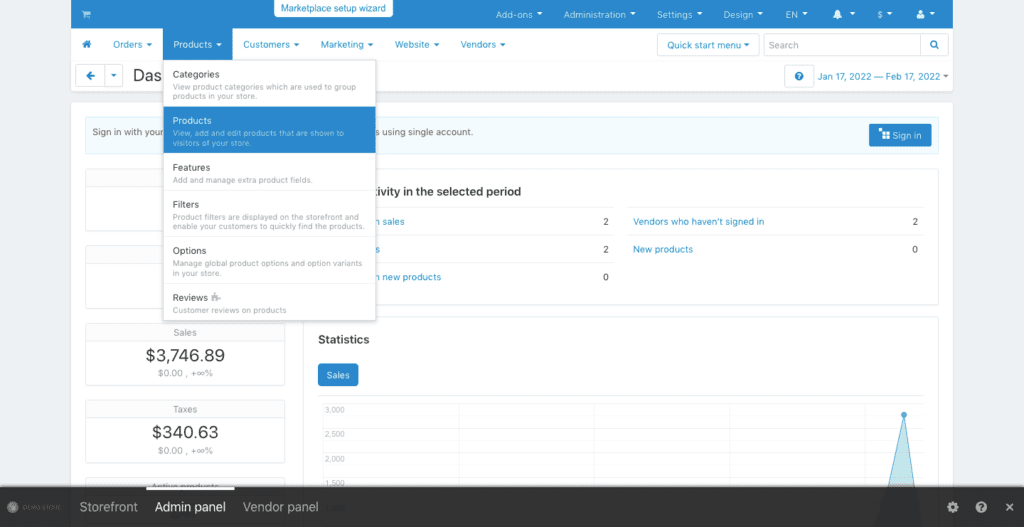
CS-Cart is a self-hosted solution, which is super flexible in terms of expansion and scalability compared to SaaS solutions. And all the data is on your side, which guarantees security of the marketplace.
Essential metrics to track marketplace growth
To track the growth of your marketplace, you need to focus on three groups of metrics:
| Usage metrics | Transaction metrics | Business metrics |
| These metrics show you how many visitors your marketplace has and how they spend time on your platform. | These metrics show the dynamics of transactions in your marketplace. | These are general metrics that show revenue, profitability, and customer acquisition. |
Usage metrics
- Monthly active users: count how many unique visitors came to your marketplace at least once during a certain period. This number should grow to indicate the usage growth of your platform.
- On-site time: if a customer spends much time browsing your marketplace, they are more likely to purchase something. But it’s not always a good indicator. Sometimes, customers spend too much time on the site because they can’t find what they need.
- Bounce rate: “bounced” visitors are those who came to your marketplace and left right away without doing anything. You can have millions of visitors but if the bounce rate is high, there’s no usage growth. Keep the bounce rate as low as possible.
Pro tip: Google Analytics is a convenient and effective tool to measure usage data.
Transaction metrics
- Liquidity: you need to measure seller and buyer liquidity separately. Seller liquidity is the percentage of listings that lead to transactions within a certain time period. To measure customer liquidity, calculate how many visits you get in a given month and how many transactions you get in the same period. 30-60% is a good indicator (not counting bounced visitors).
- Repeat purchase ratio: how big a percentage of your transactions are repeat purchases. It’s good to keep it high—it means you can spend more money on acquiring a new customer as they are likely to purchase more.
- Seller-to-buyer ratio: this metric shows how many customers a seller can serve. The more buyers a seller can serve, the more you should focus on supply in the beginning.
Business metrics
- Gross Merchandise Volume: the total sales value on your marketplace during a certain period. The bigger, the better.
- Customer Acquisition Cost: the price for getting a new buyer. In a perfect world, this number should be zero. In the real world—the lower, the better.
- Customer Lifetime Value: the total amount of revenue you expect to get from each customer. It may depend on the customer retention period, customer repeat purchases, and the size of your average transaction.
Net Promoter Score (NPS)
NPS shows the overall satisfaction of your customers. If you want to use only one metric to measure user satisfaction, NPS is the best choice for a marketplace.
You obtain NPS by asking your customers how likely they would recommend your marketplace to a friend. The answer is a number from 0 to 10. NPS works great because a customer can recommend your marketplace only if they are satisfied with it themselves.
The respondents are divided into three groups:
- Detractors—unhappy customers (0-6)
- Passives—satisfied but not enthusiastic customers (7-8)
- Promoters—happy customers (9-10)
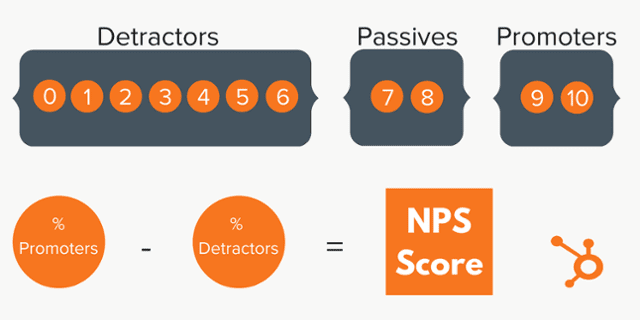
NPS above zero is good. NPS +50 is considered excellent.
Yan Anderson is the Head of Content Marketing at CS-Cart with over 10 years of experience in the eCommerce industry. He's passionate about explaining complicated things in simple terms. Yan has expertise in building, running and growing eCommerce marketplaces. He loves to educate people about best practices, new technologies, and trends in the global eCommerce industry.

